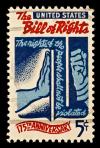Search Results
31. An Overview of the 3rd Amendment
 Third Amendment: The Quartering of SoldiersWhat is the Third Amendment?No Soldier shall, in time of peace be quartered in any house, without the consent of the Owner, nor in time of war, but in a manner to be prescribed by law.The Third Amendment Defined:The Third Amendment is a part of the Bill of Rights, which are the first 10 Amendments to the United States Constitution and ..
Third Amendment: The Quartering of SoldiersWhat is the Third Amendment?No Soldier shall, in time of peace be quartered in any house, without the consent of the Owner, nor in time of war, but in a manner to be prescribed by law.The Third Amendment Defined:The Third Amendment is a part of the Bill of Rights, which are the first 10 Amendments to the United States Constitution and ..32. An Overview of the 4th Amendment
 Fourth Amendment:Searches and SeizuresWhat is the Fourth Amendment?The right of the people to be secure in their persons, houses, papers, and effects, against unreasonable searches and seizures, shall not be violated, and no Warrants shall issue, but upon probable cause, supported by Oath or affirmation, and particularly describing the place to be searched, and the persons or t..
Fourth Amendment:Searches and SeizuresWhat is the Fourth Amendment?The right of the people to be secure in their persons, houses, papers, and effects, against unreasonable searches and seizures, shall not be violated, and no Warrants shall issue, but upon probable cause, supported by Oath or affirmation, and particularly describing the place to be searched, and the persons or t..33. An Overview of the 5th Amendment
 Fifth Amendment: Protection against abuse of government authorityWhat is the Fifth Amendment?No person shall be held to answer for a capital, or otherwise infamous crime, unless on a presentment or indictment of a Grand Jury, except in cases arising in the land or naval forces, or in the Militia, when in actual service in time of War or public danger; nor shall any person be su..
Fifth Amendment: Protection against abuse of government authorityWhat is the Fifth Amendment?No person shall be held to answer for a capital, or otherwise infamous crime, unless on a presentment or indictment of a Grand Jury, except in cases arising in the land or naval forces, or in the Militia, when in actual service in time of War or public danger; nor shall any person be su..34. An Overview of the 6th Amendment
 Sixth Amendment: Rights Related to Criminal ProsecutionsWhat is the Sixth Amendment?In all criminal prosecutions, the accused shall enjoy the right to a speedy and public trial, by an impartial jury of the State and district wherein the crime shall have been committed, which district shall have been previously ascertained by law, and to be informed of the nature and cause of th..
Sixth Amendment: Rights Related to Criminal ProsecutionsWhat is the Sixth Amendment?In all criminal prosecutions, the accused shall enjoy the right to a speedy and public trial, by an impartial jury of the State and district wherein the crime shall have been committed, which district shall have been previously ascertained by law, and to be informed of the nature and cause of th..35. An Overview of the 7th Amendment
 Seventh Amendment:Right to a Jury Trial in certain civil mattersWhat is the Seventh Amendment?In Suits at common law, where the value in controversy shall exceed twenty dollars, the right of trial by jury shall be preserved, and no fact tried by a jury, shall be otherwise re-examined in any Court of the United States, than according to the rules of the common law.The Seventh Am..
Seventh Amendment:Right to a Jury Trial in certain civil mattersWhat is the Seventh Amendment?In Suits at common law, where the value in controversy shall exceed twenty dollars, the right of trial by jury shall be preserved, and no fact tried by a jury, shall be otherwise re-examined in any Court of the United States, than according to the rules of the common law.The Seventh Am..36. An Overview of the 8th Amendment
 Eighth Amendment: Prohibits Excessive Bail and Cruel and Unusual PunishmentWhat is the Eighth Amendment?Excessive bail shall not be required, no excessive fines imposed, nor cruel and unusual punishments inflicted.The Eighth Amendment Defined:The Eighth Amendment was attached to the Bill of Rights in 1791. The amendment serves as almost an exact replica to a provision within th..
Eighth Amendment: Prohibits Excessive Bail and Cruel and Unusual PunishmentWhat is the Eighth Amendment?Excessive bail shall not be required, no excessive fines imposed, nor cruel and unusual punishments inflicted.The Eighth Amendment Defined:The Eighth Amendment was attached to the Bill of Rights in 1791. The amendment serves as almost an exact replica to a provision within th..37. An Overview of the 9th Amendment
 Ninth Amendment: Rights of the people that are not specifically enumerated in the United States Constitution.What is the Ninth Amendment?The enumeration in the Constitution of certain rights shall not be construed to deny or disparage others retained by the people.The Ninth Amendment Defined:The Ninth Amendment is a part of the Bill of Rights, which are the first 10 Amendments ..
Ninth Amendment: Rights of the people that are not specifically enumerated in the United States Constitution.What is the Ninth Amendment?The enumeration in the Constitution of certain rights shall not be construed to deny or disparage others retained by the people.The Ninth Amendment Defined:The Ninth Amendment is a part of the Bill of Rights, which are the first 10 Amendments ..38. An Overview of the Amendments
What are Amendments?
An Amendment – also known as a Constitutional Amendment – is
textual and legislative adjustments with regard to the alteration of the
original text expressed within the initial version of the Constitution of the
United States, which was ratified on June 21st, 1788. The Bill of
Rights are a collection of the first 10 Constitutional Amendments pass..
39. An Overview of the Articles of Confederation
The Articles of Confederation was the United States of America’s first legislative doctrine responsible for outlining both the processes and fundamentals of government since becoming an independent, autonomous nation; the result of defeating the British troops in the Revolutionary War in 1776. Prior to 1776, political leaders and citizens alike were dissatisfied with the lack..
40. An Overview of the Bill of Rights
 What is the Bill of Rights?Upon its ratification on September 17th, 1787, the Constitution of the United States was considered to be the primary legislative document expressing the implicit legality and jurisdictional procedure within the United States of America. The Bill of Rights – proposed in 1789, and subsequently ratified in 1791 – is the classification granted to the..
What is the Bill of Rights?Upon its ratification on September 17th, 1787, the Constitution of the United States was considered to be the primary legislative document expressing the implicit legality and jurisdictional procedure within the United States of America. The Bill of Rights – proposed in 1789, and subsequently ratified in 1791 – is the classification granted to the..41. An Overview of the Constitution Of The United States
What is the Constitution?The United States Constitution is regarded as the supreme law of the United States. The United States Constitution is in essence, the framework for the organization of the United States government and more specifically for the relationship of the federal government with its states and citizens of the country. The Constitution, which was drawn ..
42. An Overview of the Federalist Papers
 The Federalist Papers were a vehicle to promote the ideals of the Constitution, while garnering the support for its ratification throughout the American colonies. Only twelve years since declaring their independence from England in 1776, the newly-autonomous American colonies, renaming themselves the United states of America, were still without a stable form of government. ..
The Federalist Papers were a vehicle to promote the ideals of the Constitution, while garnering the support for its ratification throughout the American colonies. Only twelve years since declaring their independence from England in 1776, the newly-autonomous American colonies, renaming themselves the United states of America, were still without a stable form of government. ..43. Animal Welfare Act Text
TITLE 9 CODE OF FEDERAL REGULATIONSCHAPTER 19 CFR Ch. I (1994 Edition)Animal and Plant Health Inspection Service, USDASUBCHAPTER A - ANIMAL WELFAREPART 1 - DEFINITION OF TERMSAuthority: 7 U.S.C. 2131-2157; 7 CFR 2.17, 2.51, and 371.2(g).§ 1.1 Definitions.For the purposes of this subchapter, unless the context otherwise requires, the following terms shall have the meanings assi..
44. Article 1 Overview
 First Article of the Constitution
Background
The United States Federal Government has as its
source of power all vested in the United States Constitution. It is this
historical and priceless document that is at the vortex behind the governmental
power behind the infrastructure of the United States. The first three Articles
of the United States Constitution outline th..
First Article of the Constitution
Background
The United States Federal Government has as its
source of power all vested in the United States Constitution. It is this
historical and priceless document that is at the vortex behind the governmental
power behind the infrastructure of the United States. The first three Articles
of the United States Constitution outline th..45. Article 2
 Because the Electoral College system of America focuses on absolute majority and not plurality, it is possible for no candidate to win enough of the electoral vote to actually be declared President based purely on that election. In modern day America, there are 538 votes total in the Electoral College system and the majority of the electoral vote would require a given candidate..
Because the Electoral College system of America focuses on absolute majority and not plurality, it is possible for no candidate to win enough of the electoral vote to actually be declared President based purely on that election. In modern day America, there are 538 votes total in the Electoral College system and the majority of the electoral vote would require a given candidate..